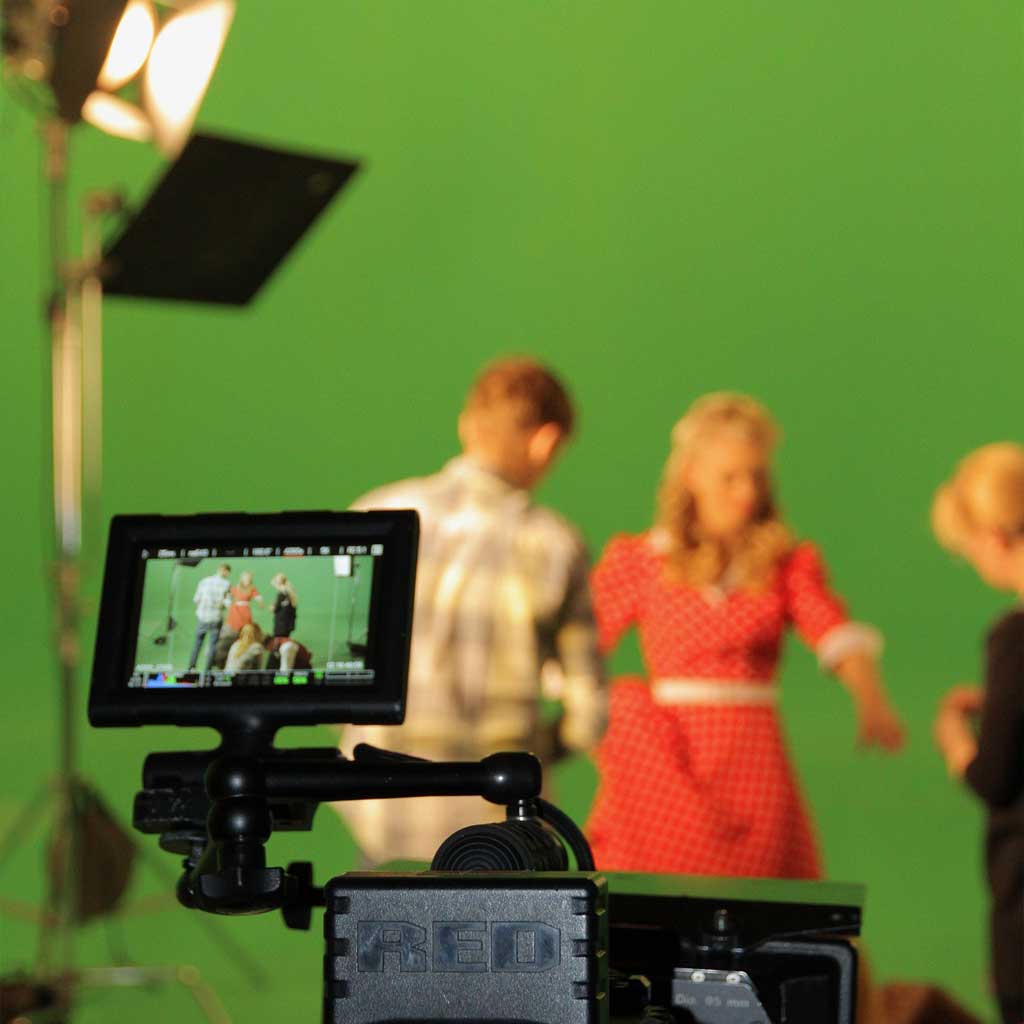When you’re an amateur filmmaker or just starting out as a film student, budget often guides your decisions. For instance, unless you have substantial financial backing, flying across the world to film is not likely an option. Fortunately, it’s possible to give your film a professional look without leaving your living room.
Consider some big-name movies like The Day After Tomorrow, 300, Sin City and Avatar. What do all of these huge blockbusters have in common? They were all filmed in front of a green screen, a technique you can easily replicate.
In this guide, we will look at how a green screen works, how you can create your own, and provide some tips on how to make the most of it.
To understand how this process works, let’s look briefly at its history. Chroma key, or green screen, has become increasingly popular in recent years, but it’s a fairly old process. The earliest forms of this technology were created in the 1930s, when film compositing was done painstakingly by hand. Once computers became popular, chroma keying became much easier.
Today, many movies and television shows are filmed entirely in front of a green screen, allowing the filmmaker tremendous artistic control while cutting down filming times and production costs. In addition, it’s frequently used during film school projects to allow those on a budget to explore environments which would otherwise be out of their reach.
How a Green Screen Works
Chroma keying is called “green screening” because it involves filming an actor in front of a solid-colored background, usually in a lurid shade of either green or blue. The color chosen does not matter, but it’s important to use a color that can be safely removed from the final product. Shades that are repeated in the actor’s clothing or skin tone will not work.
Once the footage has been filmed, the colored background is removed digitally in post-production. It’s then replaced with other footage, such as an exotic destination. Using this technique, you can place your actor in any setting you wish.
You can also add other effects, like adding animated characters or changing the appearance of the actor. A green screen allows you to seamlessly blend animation with live action footage, which erases many of the limitations posed by low-budget films.
How to Make Your Own Green Screen
While a professional green screen can be purchased for as little as $50, if your production is on a tight budget, it is just as easy to create your own green screen.
If you have solid color fabric sheets lying around the house in the appropriate color, you can simply use that to film against. A king-size sheet might be sufficient for your needs.
Or, if a sheet isn’t available at home, simply go to a fabric store and buy an appropriate-size piece of fabric for as little as $10. One thing to keep in mind is to keep an eye for lint collecting on the fabric, which can be easily removed.
One more inexpensive option is if you have a studio or room in your home where you can paint the walls, you can quickly create a green screen.
Once you have the green screen in place, all you need in order to get started is software that supports chroma keying. Most film editing programs like Final Cut and Adobe After Effects will make it simple to remove and replace the background from chroma keyed footage.
Tips for Success
• Be sure to use proper lighting. Three-point lighting is the industry standard. This involves placing lights in a triangle around the subject, providing illumination from the sides and rear. The purpose of this is to reduce the amount of shadows cast against the green screen.
• Touch up the subject to fit the background. You may need to add highlights or shadows digitally to make the subject seem more at place in the new surroundings. It helps to know what the final scene will look like while filming so that you can match the lighting of the background imagery you plan to use.
• If you’re going to use any CGI graphics in the finished product, spend the money to ensure you’ll get high-quality animation. The quality of the background imagery will make or break a chroma keyed film, so either study animation or plan for effects that will be within your budget rather than trying and failing to achieve something more ambitious.
• Don’t forget stock footage. A surprising amount of stock footage is available for free or at very low prices online, and video editing software makes it easy to modify this footage to suit your needs.
A shoestring budget doesn’t need to cripple your filmmaking and by following the steps above, you now know how you can achieve impressive and inexpensive effects through using a green screen. A small investment and some creativity can enable you to achieve nearly any effect you desire.
